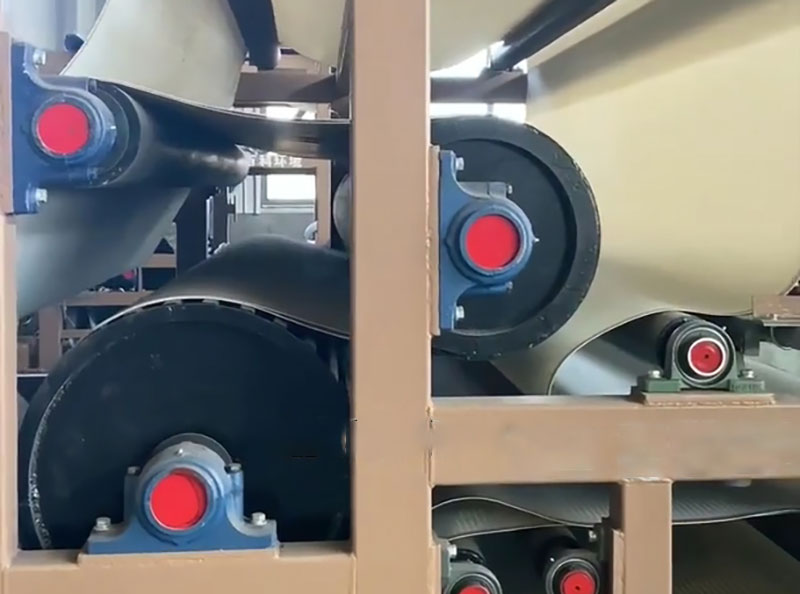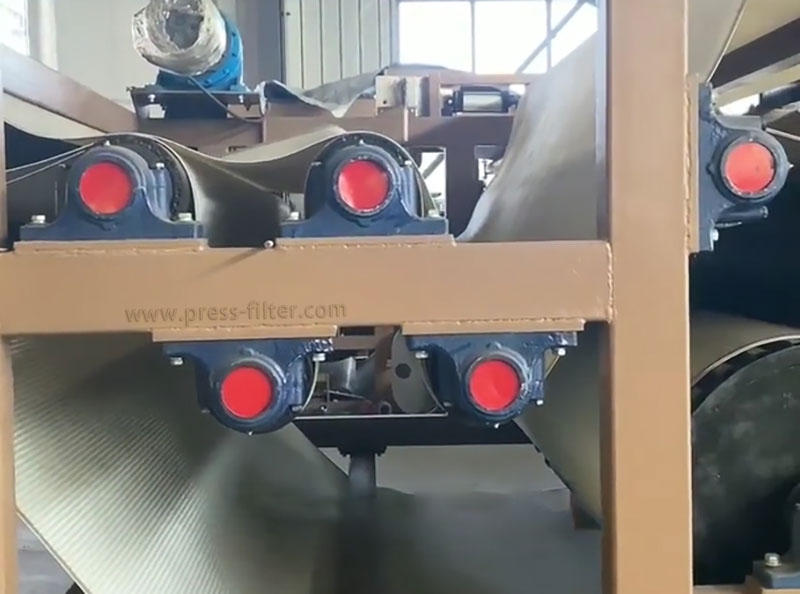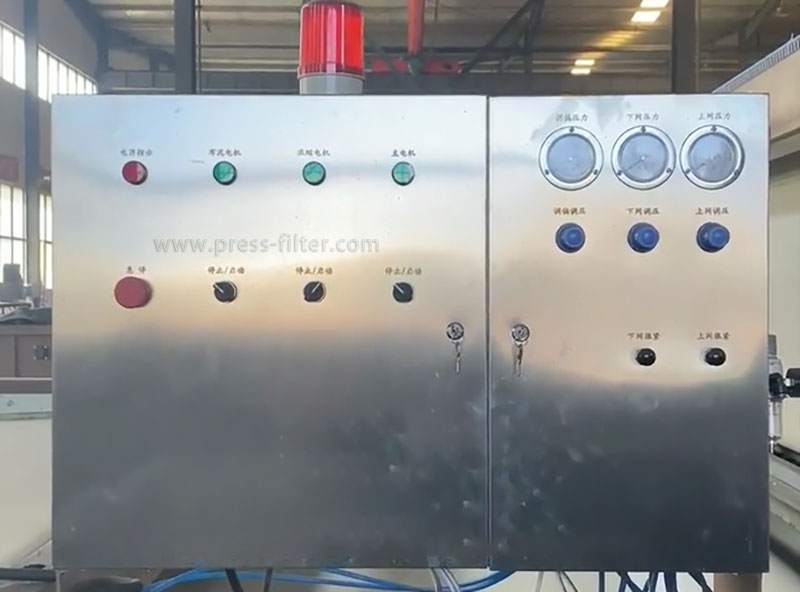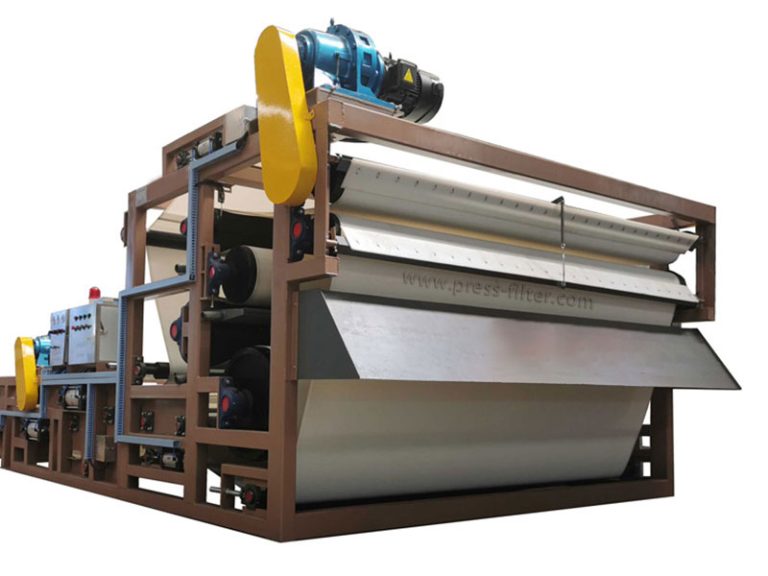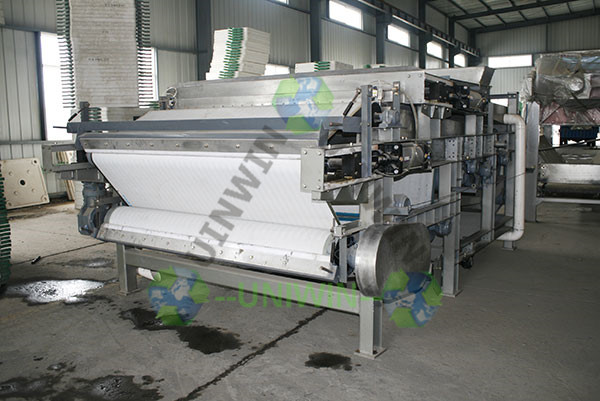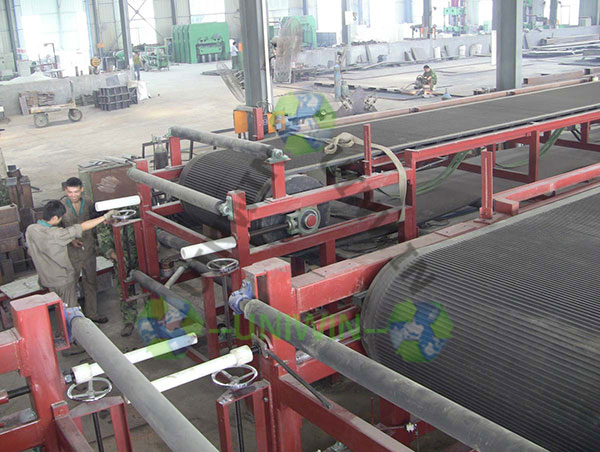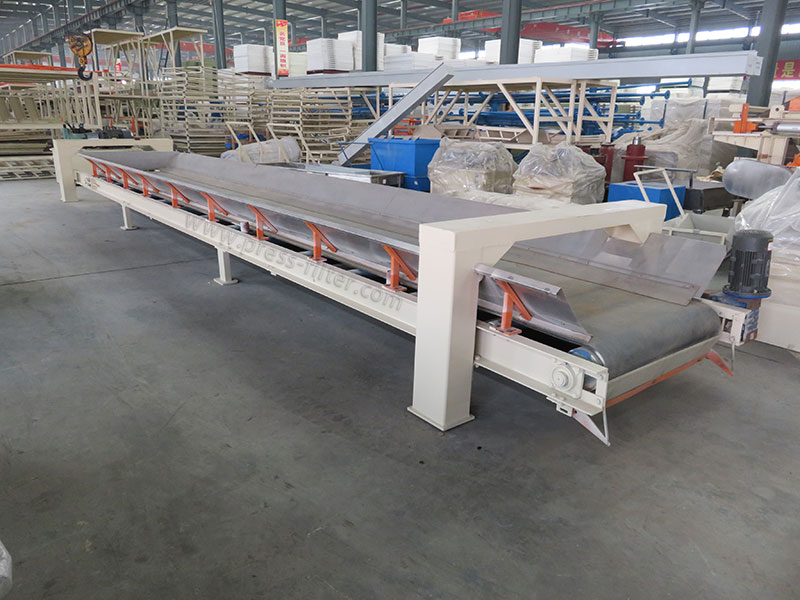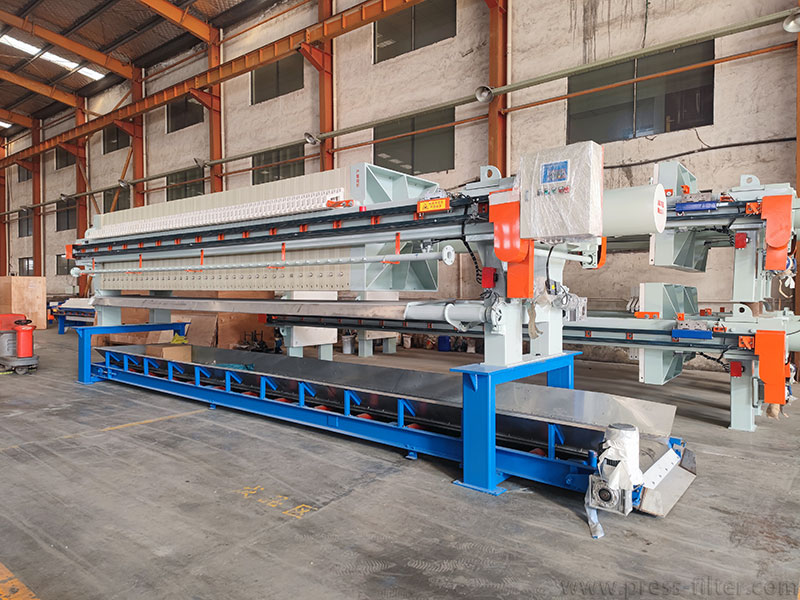Belt Filter
Heavy-duty split thickening belt filter: Due to the split structure, the length of the thickener can be changed within a large range according to the water concentration of the sludge and the needs of users. It has a large processing capacity and is widely used in large-scale mine tailings, large-scale sand washing plants, stone field sand-making mud dehydration, ceramic raw material mud, mountain sand washing, earth-bag sand mud dehydration, river dredging and other industrial sludge deep dehydration treatment and large sewage treatment plants.
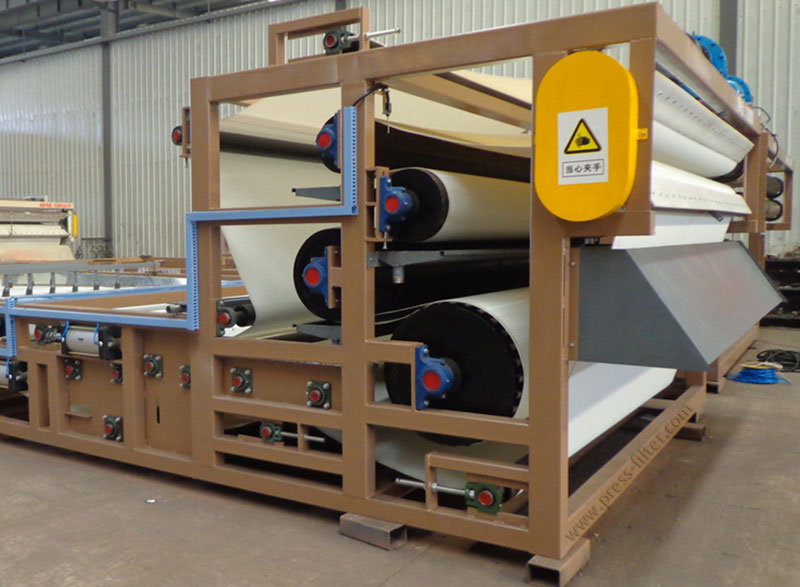
Working Principle
The sludge is pumped into the dynamic (or static) mixer through the delivery pump, where it is simultaneously combined with the anionic (or cationic) ion flocculant solution at a concentration of 0.05-0.1%. After thorough mixing and a complete reaction, the fine solid particles (or suspended matter) within the sludge coalesce into larger floccules, separating the bound water within the materials and surface water into free water.
As the material is transported and evenly distributed onto the filter screen in the extended gravity pre-dehydration area (or on the sludge dehydrator), free water passes through the back of the filter screen under the influence of gravity, seeping out and separating. This process results in the formation of stagnant sludge, ultimately achieving the maximum pressure condition within the squeezing dehydration area.
Next, as the mesh belt advances, it is clamped between the upper and lower mesh belts and passes through the filter belt with adjustable tension, the rotating roller, and the pressure roller with gradually decreasing diameters. During this process, the action of the progressively increasing roller extrusion force and shear force is applied. Moving through the low-pressure area, medium-pressure area, high-pressure area, and strong roller extrusion area, the water in the sludge is continuously expelled through a step-by-step increase in pressure.
Finally, the filter cake with low moisture content is discharged and scraped away by the scraper plate. The upper and lower filter belts are separated. The trace particles in the pores on the filter surface are removed by high-pressure flushing water and a roller brush, and then the next dehydration cycle is continued.
Parameter
| Model | BKFT-2000 | BKFT-2500 | BKFT-3000 | BKFT-3500 | BKFT-4000 | |
|---|---|---|---|---|---|---|
| Power (Kw) | Host | 5.5 | 7. 5 | 7. 5 | 7. 5 | 11 |
| Concentrator | 2.2 | 2.2 | 2.2 | 3 | 4 | |
| Complete set | 23 | 29 | 36 | 41 | 46 | |
| Filter belt width(mm) | 2000 | 2500 | 3000 | 3500 | 4000 | |
| Processing capacity(m³/hr) | 25-30 | 30-45 | 40-60 | 50-70 | 60-80 | |
| Dimensions | Length(m) | 11000 | 12000 | 12000 | 12000 | 13000 |
| Width(m) | 2900 | 3400 | 3900 | 4400 | 4900 | |
| Height(m) | 2100 | 2300 | 2300 | 2500 | 2500 |
Product Advantages
The new filter press process design is adopted, and the dehydration structure integrates concentration filter press and radial pressing. The focus is on the technical improvement of the concentration process and filter press process. It is equipped with an independent concentrator and an additional mesh belt. The operation effect is good and it is well received by users.
The processing capacity is about 1.5 times larger than that of ordinary machines, and the moisture content of the filter cake is more than 10% lower than that of ordinary models.
Convenient management and simple maintenance.
It can work continuously with low labor intensity and cost.
Belt Filter Details
